While the discourse and study of conceptual art in the West is supposedly well-formed, artists in Eastern Europe have worked with a similar formal vocabulary for decades. Moderna Galerija in Ljubljana, where I am director, was the first institution in Europe to start systematically collecting works by mostly Eastern European neo-avant-garde artists since the 1990s. Since then, the collection Arteast 2000+ has steadily grown, and yet for many highly complex reasons the history of conceptual art in the West has been systematized, while we are almost without a history in the East.
In 2007 I began work on a project on Eastern European conceptualism to attempt to understand this problem. It began with a conference involving Eda Čufer, Cristina Freire, Boris Groys, Charles Harrison, Vít Havránek, Piotr Piotrowski, and Branka Stipančić, where we aimed to define what the term conceptual art actually means in our part of the world by analyzing the sociopolitical context that has informed it, but also by comparing the situation to that of similar experiences shared with Russian and Latin American conceptual art. This required that we first attempt to situate the term “conceptual art” in the most fundamental sense—in terms of how it was defined in Western theory and how was it defined in other places. One of the fundamental differences between the West and the East during the Cold War was the difference between individualism and collectivism. How crucial are these differences in interpreting and perceiving conceptual art in the East, the West, in Poland and Central Europe, in Latin America, but also in the wider framework of the global situation. The 1960s and 1970s marked the crucial starting point for conceptual art, but there is also the question of how it changed in later periods.
These were the questions with which we began the first part of the conversation in Ljubljana, published here in this issue of e-flux journal, with the next parts following in later issues. The ultimate aim of the conference was to arrive at a methodology for understanding Eastern European conceptual art, either by developing a discursive system or by articulating a methodology for working around the need to. It is a crucial question, closely tied to the very beginning of conceptual art, of how to negotiate different identities without resorting to the notion of universalism.
—Zdenka Badovinac
Zdenka Badovinac: The first question is really the basic question of the term “Conceptual art.” Boris, could I ask you to start the discussion about this term? What does it mean? What are its main characteristics? How was it defined in Western theory? And how was it defined in other places?
Boris Groys: In Moscow some Russian artists in the 1970s self-identified with this term. I mean the term: Conceptualism, or Conceptual Art. In fact, I wrote a text in 1978 on Moscow Romantic Conceptualism. It was a friendly critique of reception of Conceptualism, of Conceptual art in Moscow—however, a certain circle of artists actually committed themselves to this term—and were praized or criticized by the others as being “Moscow Coceptualists.” The term “conceptualism” already has its history and it doesn’t make sense to ask if there are true or false conceptualists, like true Christians or false Christians, or if the Soviet communism was or was not actually communism. To a certain degree, this is a kind of scholastic debate. Thus, we can speak of a specific conceptualist school in Moscow. After Stalin’s death, from the mid-1950s onward, a certain neo-modernist scene emerged and came to be very influential in big Russian cities. At that time, thousands of artists became very much public figures and professed a certain kind of romantic belief in the power of art, of the artistic individual and subjectivity—through a pretty much second-hand repetition of Russian modern art or Western twentieth-century art. On the one hand, there was a gap between claim and fact; on the other, the neo-modernist claims themselves sounded somewhat obsolete, at least to me. The Moscow conceptualist circle didn’t seek so much a critical reflection of official art—official art was already passé and not even a topic of discussion. Rather, it investigated a kind of Van Gogh complex: the figure of the paradigmatic artist as the struggling, suffering individual. The decisive influence came from French structuralism more than from English linguistics (in the 1960s and the beginning of the 1970s, everybody spoke of Lévi-Strauss, Jacobson, Foucault, and so on) and from Russian formalism, where everything was a statement, everything was language, a move inside a system. Nothing was purely individual or subjective. So people began to act according to their own self-understanding of what it was to be a Conceptual artist. They began to criticize the traditional neo-modernist, neo-romantic artistic claim. There is an analogy to certain Western movements in the 1960s. One can speak of conceptualism in terms of Art & Language’s work. However, this is only true to a certain extent. Similarly, we speak of Broodthaers and Haacke as Conceptual artists, as the “first stages” of institutional critique and the critique of subjectivity. I would say that they fit the paradigm only in a vague sense: in looking at art and social conventions in analogy to linguistic activity; in using very critical, almost cynical arguments; and in not using official “high” culture in their artistic practice. I would say that some Russian artists of the 1960s and 1970s also fit in this general paradigm and theoretical framework, with their strategy of conceptual or semi-Conceptual art. So, it is not illegitimate to speak about this art as Conceptual, despite the criticism received within these parameters of critique.


Eda Čufer: You mention that when this neo-modernist romantic claim appeared, some artists started to become known to the public. I believe that one of the characteristics of the Russian scene was the limited access to the broad public. This circle was pretty much isolated.
BG: Well, yes and no. On the one hand, Solzhenitsyn was isolated, and yet as a result everybody read him, so censorship was a kind of advertisement. People also knew of Ernst Neizvestnyi and other artist-dissidents. Sure, the circle of independent unofficial artists was isolated, unable to publish, officially exhibit and so on. At the same time, the Moscow, St. Petersburg, (then Leningrad) public knew the artists very well. People bought their works and visited their ateliers. For example, if you went to Kabakov’s studio, you could find the whole political beau monde, the wives and daughters of the Politburo members included. If you were inside the 1960s and 1970s inofficial art scene, you had the feeling that it was everywhere.
EČ: One issue, if we are to speak about historicizing, is critical reception. One of the very important sources for reconstructing a historical period is reading the reviews of a certain art event. However, this period probably has limited access to this form of reconstruction, since the debate was censored, and in this respect critical reception cannot be comparable to what was going on in the West.
BG: Russian conceptualism was not very public, no question about that. Sociologically speaking, it was more like those art movements at the beginning of the twentieth century or the 1920s. These movements were known, people were aware that such terrible manifestations of “decadent” idealism took place. They were in newspapers. However, no archives, extended publications, or systematic reviews exist. However, Russian conceptualism is in fact documented—numerous conversations were recorded by the KGB. All my lectures in official spaces during the 1970s attended by 300 to 500 people were presented to me by the KGB before I left the country. They also exist in private archives, in the archives of art historians, and so on. There are huge photographic archives, as all these exhibitions were photographed, documented—just never published.
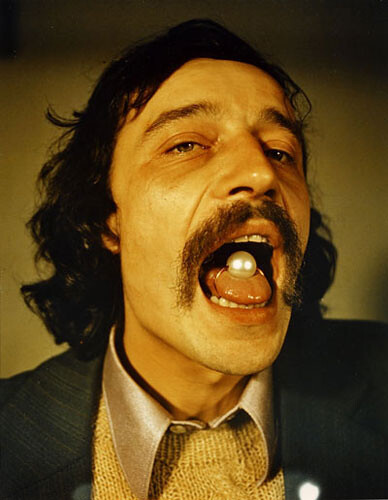

ZB: But where are most of these archives now?
BG: Some of the archives came to Zimmerli Museum, at Rutgers University some were bought by “new Russian” collectors full of money. Even the Getty Museum has a lot of material that was never opened. The stuff is there but nobody cares about it. Russia in general is not fashionable. People don’t see any potential for using the material to write a PhD dissertation in Russia or the USA. But in the Soviet Union of the 1970s everyone was there, the political and cultural elites and the public in big cities—all were very much aware of it. Everybody read dissident writers and saw dissident exhibitions. Throw out the image you have of the romantic artist-in-the-basement. They made some money, or at least much more than other people, because they sold their work in the private market while everybody else got a salary. They had ateliers and those were the social spaces at that time. Who had big spaces that could host parties? Only famous artists. So they were unprivileged and privileged at the same time. It was a very ambiguous situation.
ZB: Charles, perhaps you would like to comment on the term “Conceptual art” and on what Boris has said. You mentioned that Conceptual art was a reaction to neo-modernism, a relation that was important in the West, but in a very different manner. It would be very interesting to hear what you think of romantic conceptualism. In Slovenia, for example, Tomaž Brejc came up with the term “transcendental conceptualism” in relation to the OHO group.
Charles Harrison: For me, Conceptual art has a fairly precise etymology. If you look the term up in an art dictionary, the first mention you get is Henry Flynt’s writing about “concept art” in La Monte Young’s Anthology, published in 1963. I think that’s rather irrelevant, because Flynt is really talking about music and mathematics, and if you try to map it onto what Conceptual art actually came to mean, it doesn’t quite fit. It was a product of that rather loose, Fluxus-like scene in America in the early 1960s. I believe the most important use of the term was first published in the summer of 1967 in Sol LeWitt’s “Paragraphs on Conceptual Art.” The context in which that appeared is quite important, as it was in the American magazine Artforum, the main modernist bible. That 1967 summer issue looked at the American minimalists: one of Paul Morrison’s notes on sculpture was published in that issue, a piece by Robert Smithson, Sol LeWitt’s “Paragraphs on Conceptual Art.” But crucially, the issue also included Michael Fried’s essay “Art and Objecthood.” I speak as somebody who in 1967 was a provincial modernist in England trying to get a grip on what was going on in America and in New York, which for me was the metropolitan center of modernism. That particular moment made it very clear that the modernist mainstream, as it were, had split, and that there was a significant controversy within American modernism. Fried’s “Art and Objecthood” was an attempt to stem what he saw as the incoming tide of minimalism, or “literalism” as he called it, and to defend a kind of Greenbergian modernism—based on the notion of quality, instantaneity, and experience—against art which took context into consideration.
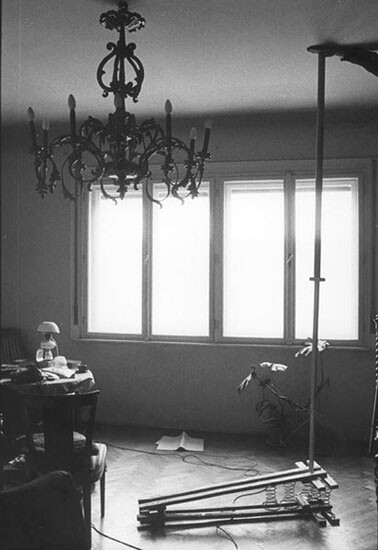

There was this feeling that something was giving way, that the old order was becoming defensive and dogmatic in an effort to protect its boundaries, and that modernism itself was a type of orthodoxy fraying at the edges. I remember my colleague and friend Michael Baldwin talking about that period. He was an art student in the mid-1960s. “Modernism had become like shifting ground,” he said. “You put your foot on it and it would float away from you.” The system was breaking up. Sol LeWitt’s announcement in 1967 was like the manifesto of a movement. What mattered was not the appearance of the object, but the vitality of the idea, and that was its crucial, distinguishing characteristic. One sentence from his first “Paragraphs on Conceptual Art” says: “What the work of art looks like isn’t too important.” That was a powerful statement in opposition to orthodox modernistic statements, where the result is a consequence of what something looks like and what you feel about how it looks. This whole system of aesthetics was being set aside. That’s what the moment of Conceptual art means to me: the realization of schism and collapse—not of a cultural orthodoxy, but an aesthetic one. But of course when the latter gives way, the cultural order is also under threat.
The next significant moment comes with the first issue of Art-Language: The Journal of Conceptual Art, published in the spring of 1969. This was a group of four young English artists—Terry Atkinson, David Bainbridge, Michael Baldwin, and Harold Hurrell—identifying with a new avant-garde tendency that had been given a name in America. And the subtitle of the journal disappeared immediately after the first issue, which is significant. This group of people had been talking together since 1965 and formed themselves into a group as Art & Language in 1968. Crucially, artists identified themselves with Conceptual art, and these were artists writing a type of theory. In my view, Conceptual art is the collapse of the boundary between artistic and theoretical practice, the idea that theoretical practice might be a primary artistic practice. There were two ways of looking at this: either theory had become a primary artistic practice, or theory as art was a type of avant-garde idea. These two interpretation corresponded to a split within Conceptual art itself and Art & Language’s particular kind of art. Here, theory becomes a Duchampian readymade and the competition is to play the next most avant-garde idea as an artwork. I associate that with American Conceptual art, and particularly with the position represented by Joseph Kosuth. Art & Language’s position was not that of theory as an artistic practice with a smart avant-garde move; it was what you were forced into by the collapse of modernism. If you could no longer identify art with the production of clearly definable objects, as defined in structural terms by a certain physical integrity, but could only define objects conservatively and institutionally, then you didn’t know where the edges of artworks were anymore. Not knowing where these are, you push them, whether you like it or not. You can’t simply explore this by making avant-garde objects. You have to work out what you’re doing and if your practice is the practice of art. Art & Language’s position has always been that artistic practice needs to become essayistic, like writing, simply in order to get out of the hole. But within the English Art & Language, that was always seen as a transition—a specific contingent practice, forced by the collapse of modernism and its many authenticating and authorizing systems. To borrow an Art & Language slogan: “If Conceptual art had a future, it was not Conceptual art.” This in the third moment, which for me lasts until about 1972, perhaps 1974. The previous moment spans very strictly from 1967 to after 1972. By the 1972 Documenta, it became clear that this moment was over—in this big international avant-garde salon, Conceptual art suddenly became a career move. The movement’s contingency and temporary status no longer carried practical virtue. Furthermore, around the late 1980s and early 1990s, the term “Conceptual art” started to be widely applied in journalism and popular curatorship. As a label for anything that wasn’t painting or sculpture, it has increasingly become an umbrella term for almost any avant-garde practice associated with cultural dissidents.
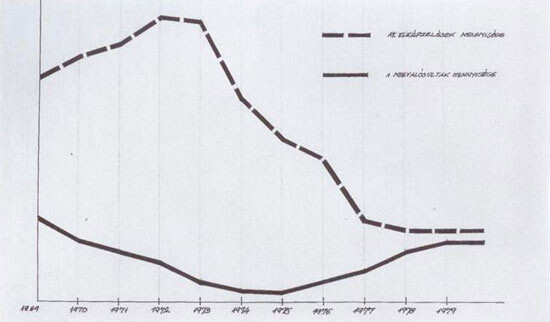

Now, when we talk of Eastern Conceptual art, are we, as it were, retrospectively applying a kind of avant-garde validation? Were these practices in the East part of an international breakdown of modernism, which had a different sense and practice than that of the West? Or are we actually identifying a significant common set of strategies and problems? Is there really a common ground, despite the huge political and cultural differences between the contexts? I’m interested in what Boris said, which confirms my suspicions that samizdat modernism wasn’t about samizdat, really. When modernism breaks down, it does so in more or less the same way everywhere. That’s to say that the aesthetically authorizing processes are giving way, leaving behind whatever authority they may or may not have. On the other hand, I think we have to be very careful not to fall into the wider sense of Conceptual art as a means of ratifying anything that looks like avant-garde practice.
ZB: This is the crucial question.
BG: That is a really interesting point. In fact, this kind of shift from the form or image to a kind of theoretical interpretation, which was crucial in the 1960s in the work of Conceptual artists, could never have taken place in the Soviet context, where this pure visual form was never taken into consideration. That means that the most recognizable aspect of these Soviet artists’ work was primarily their ideological intention.
CH: Not that the idea of pure visuality is not ideological …
BG: It was ideological, but immediately recognized and understood as such. That means the political attitude of an artist was the first thing you identified when you saw the work, from the initial Russian avant-garde to the end of the entire period of Soviet art. If you saw something like pure form, it probably meant that the artist was anti-Soviet. The work was based on the premise that ideological content and interpretation were everything. As there was no market, no connoisseurship, the visual quality as such was nothing. At the end of the 1960s and the beginning of the 1970s people like Kabakov, Komar & Melamid, and others began to diversify, differentiate, and mix these ideological contexts.They started to develop interpretations that were non-pro, non-con, non-anti. It was a deconstructivist practice, which in effect amounted to the same thing as the Western Conceptual art. It was a different kind of shift, from a very strictly ordered ideological system of interpretation to a free-floating, ironical, and deconstructive interpretation. And to invent this type of interpretation, to undermine this strict order of ideology, was the main goal of the artists inside the circle. So, Western and Eastern European practices are comparable on this level, but very different on the other level. There was the market, connoisseurship, and concentration on pure form in the West, while in the East there was a very rigid ideological context with a very rigid system of interpretation.
CH: It’s easy to fall into the assumption that all the politics is in the East, and in the West we only have a very political modernism. However, it’s important to remember that part of the motivation behind the split that was going on in America—to a certain extent mirrored in England—was one between the Left and the Right at the time of the Vietnam War. Those who identified with postmodernism and Conceptual art in America were often members of the Art Workers’ Coalition, opponents of the American strategy in Vietnam, the invasion of Cambodia, and so on. They were picketing museums with placards saying “Against War, Racism, and Oppression,” and had a strong contingent of feminists. Hard-line modernists, post-painterly abstractionists, were mostly defenders of the American policy in Vietnam. I remember Greenberg saying at the end of an interview, when he was off the microphone, “I know what we should’ve done: we should’ve sent in another 20,000 troops and held them off the Vietnamese coast.” Artists like Ken Noland were putting up American flags outside their lofts. There were ideological divisions there, not unrelated to what was going on in the East, although the connections were very hard to trace, just as the politics were hard to trace in Cold War conditions.
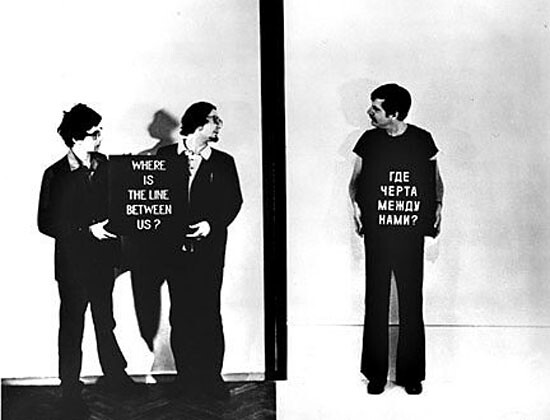

BG: I remember this very well, in regard to people coming from the West in the 1960s. We felt ourselves close to them aesthetically but not always politically. We were deconstructionists and didn’t want to be politically engaged, since this could somehow be a trap, when people took precisely the positions power wanted them to take—even if it is a dissident position. So we tried to escape this kind of framework—not to find a place within it as dissidents, but to question it, to escape the entire ideological framework. And friends who came from the West understood this, although it took them a while. They were very politically motivated at the time and it was difficult for them to understand our attitude, the type of play with the language of power.
ZB: I think we agree then that for both sides, the deconstruction of modernism was a very important issue. What Boris said applies to Eastern European countries as well: the question of pure form actually didn’t exist in our spaces either. This leads to another important question: How different were our Eastern modernisms? And furthermore, do you think we can maintain the relevance of the other two issues—the dematerialization of the object and institutional critique?
CH: One thing that slightly worries me in your representation of Western histories is that there can be an impression that there is an agreed upon narrative. It’s not like that at all. There’s October’s Conceptual art and Benjamin Buchloh’s History of Conceptual Art, in which the major figures are Broothaers, Buren, Graham, Haacke. And there is the importance of Conceptual art in the inclusion of institutional critique. Finally, there’s the Art & Language sense of Conceptual art, an almost philosophical practice that doesn’t know whether it’s philosophy or art. To quote Michael Baldwin again: “It’s art in case it’s philosophy, and it’s philosophy in case it’s art.” It is really addressed to a very specific set of problems. These problems may, incidentally, be institutionally critical, but Conceptual art can’t help being so—it tends to see institutional critique as something that desperately needs the institutions which it purports to be critiquing and is underwritten by a rather naïve politics. In this sense, there are at least two very different histories of Conceptual art, perhaps more than two, but these are not usually reconciled. From the point of view of October, the kind of Conceptual art that Art & Language represents is modernist, because it is still concerned with issues of internality, with the question “Is this any good?”
ZB: I think it’s important to find or decide which history from the West we are using.
CH: To put the problem in larger terms, one of the things that hangs over our discussion is the question of what art filters for us, what comes up for the count. Do things come up for the count in response to the question “Is this radical?” Or do they instead come up for the count in response to the question “Is this any good?” Are they actually the same question? Are things good because they’re radical, or are they radical because they’re good? Why are we picking out some things and calling them Conceptual art?
BG: I think there are very definitive criteria of difference between conceptual and non-conceptual approaches. On one end, whatever an artist produces is considered a manifestation of his or her subjectivity. On the opposite end, art is understood as being shaped by certain linguistic, social, political, ideological, and interpretative conditions. I would say that the term Conceptual art was applied by many artists and theoreticians in Eastern Europe to mean this second way of looking at things: this critical self-reflection, a certain disbelief in the guiding role of subjectivity, in the possibility of making art outside the system of linguistic and other conventions. Could we say this use of the word is so historically entrenched that we should reject it? I believe this would be unwise. People draw these distinctions for themselves. That is how they experience them. Why should we criticize that?
ZB: For us it is important to maintain the problematic nature of the term. I propose we continue to use the term, because it has been used for decades.
CH: For instance, Boris is drawing a distinction between, on one hand, a position based on subjectivity, and on the other, a position based on the sense of determination by language and semiological structures. I can’t conceive a notion of subjectivity which isn’t entirely ringed by linguistic and semiological considerations. We’re then left with a bold claim on authenticity, what indeed has driven a lot of avant-garde art for me.
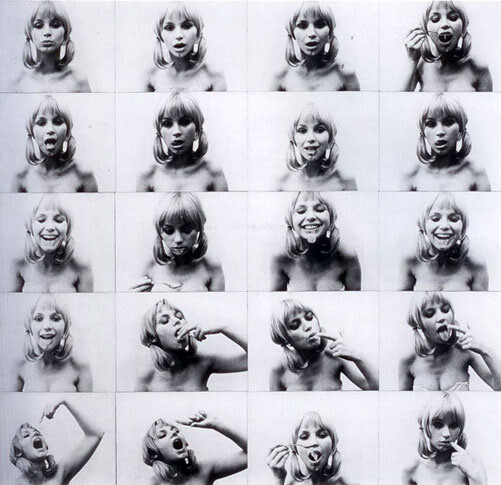

BG: I believe this is the real limit and the real divide, one between people who see “I,” subjectivity, and so on as a linguistic function, and people who believe in a certain authenticity of art beyond language and its conventions. It is a type of ideological, historical, artistic divide, and this divide was articulated in the term “Conceptual art.”
Piotr Piotrowski: I would also propose that we keep this term in the exhibition, even if it’s unclear in terms of Eastern Europe. This is a methodological question dealing with the history of art in Eastern Europe, not only relating to Conceptual art, but also to the classical avant-garde. For example, Cubism or Futurism mean something different in Russia, Poland, and Hungary than in countries like France or Italy. This syncretism of art historical terminology, applied to Eastern or Central Europe, is crucial to understanding the whole history of art in this region. The same applies to Conceptual art. I am very interested in defining Conceptual art in Central Europe itself, even if the geographical boundaries of Central Europe are unclear. I believe we can define Central Europe, which is a bit different from Russia, in geographical terms, and connect it to this dynamic surrounding artistic terms. This means Poland, Czechoslovakia, Hungary, Romania—even if only in the south—and East Germany as well. So, Conceptual art worked as something like a subversive approach to political realities. The point of departure for defining political realities is the dominance of Socialist Realism, understood as a political means, as propaganda. Importantly, the term “political” was synonymous with a propaganda approach to reality. However, artists answered very differently to this point of departure. In some countries that were relatively free, like Poland after 1956, artists were against Socialist Realism as a propaganda formula, but they did not want to deconstruct the notion of the political. Rather, they wanted to adopt a subversive approach by maintaining the autonomy of art in relation to politics. In Poland, even if Conceptual artists perceived themselves as subversive artists, as anti-totalitarian artists, they still wanted to maintain some things that were connected to the West and to a bourgeois approach to reality, like the autonomy of art. There was a kind of dialectics of modernity in Poland.
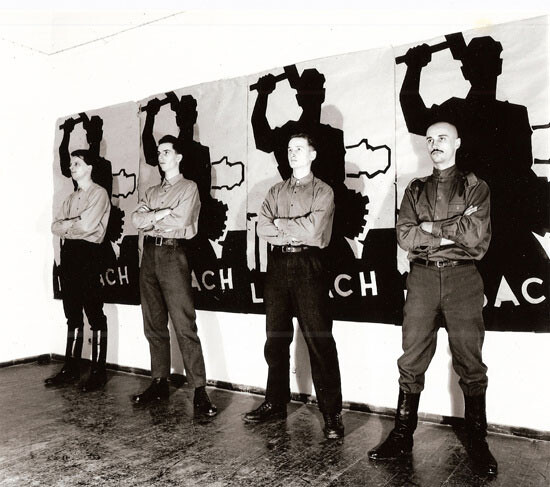

By contrast, in Hungary, for example, there was a different experience. Among Conceptual artists, Hungarian neo-avant-garde artists were the only ones to react as a group to the Prague Spring in 1968. They produced something that was directly critical of politics, as Szentjobi did. In the Hungarian media, Conceptual artists or neo-avant-garde artists were more deeply involved in politics than Polish artists. They elaborated political issues in a direct way, in contrast to Polish artists. In Czechoslovakia artists did not address politics directly, particularly after 1968. After everything was seized by the post-1968 “normalization,” especially in Slovakia, artists just left the public sphere and turned to nature. Nature was interpreted as a free space, in contrast to the public space of the cities and public institutions. On the other hand, Knížák was not a Conceptual artist, although he produced body art and possibly introduced Fluxus to Czechoslovakia. He was doing a sort of critique of painting as such, both Socialist Realist painting and abstract painting. To him, painting was connected to the establishment. It was hierarchical. Central European artists, with the exception of the Gorgona Group, had a very unique approach. As the Hungarians understood it, art was divided into Socialist Realist painting on the one hand, and abstract painting on the other. The latter was an expression of freedom and liberty; it was a political approach to art. This sort of attitude continued in most countries until the end of the 1960s and the beginning of the 1970s, except in Hungary.
In short, what was interesting was the recognition of this subversive approach to political reality, although this subversiveness was defined very differently in many countries. It’s hard to give an umbrella definition of Central European art. Sometimes there was very little exchange between small countries, and some countries wanted—for psychological reasons—to be compared to the West. The West functioned as a pattern for Conceptual art, and this pattern went from West to East. This produced a diverse and heterogeneous picture of the region. Sometimes we even communicated with people from the other countries via the West. For instance, we spoke English with Czechs instead of our own language, which is very similar to the Czech language. So the West worked as a sort of mirror. This was probably less true in the Soviet Union, where the intellectual and artistic milieus were more autonomous and powerful. They perceived themselves as stronger than smaller groups of artists in countries like, for example, Romania or Hungary. How did Conceptual art work subversively in political reality? The answer is very different in different countries. Also: How did the West work as a mirror or a point of departure for different approaches to different realities?
ZB: I think this is one of the crucial questions—whether the West can serve as a measure for us. Maybe that’s not a very positive view.
Cristina Freire: In Latin America today, all the structures and stories about Conceptual art come from the West, the official ones we were talking about—Fried, Art & Language, Sol LeWitt, and so on. Institutions tell this story as the official history of Conceptual art. But it doesn’t really apply to Latin America, where there was more of a political reaction and context. Without this political context, we can’t understand what comes after the 1960s, especially 1964. Brazil, Argentina, Chile, Uruguay, and other Latin American countries didn’t have the same artistic standing as Europe and the US in this period. You can find some similar strategies, but Latin American artists didn’t recognize themselves as Conceptual artists.
PP: That’s also true for Central Europeans.
CH: The problem I have as an art historian is how to define Conceptual art. I can use the wider sense, which is what we’re generally using here. In this case, what I understand as Conceptual art becomes one very small component—perhaps central, but just one component among many. Starting in the late 1950s, the breakdown of a set of protocols of art-making, of art and politics, art and ideology, notions about autonomy, whether art is indeed a socially autonomous practice or not—all seemed to be suddenly disputed, up for grabs in practice and theory. Conceptual art can almost be a footnote to that larger movement. In that sense, you can understand why Latin American artists don’t want to be called conceptualists. Then there’s the second sense, in which Conceptual art is identified historically with the strange connection between philosophical-aesthetic critique and dissidence and subversion, holding onto the philosophical-aesthetic problem at the heart of political dissidence. That is partly what gets seized upon in the East. Identification with Conceptual art in the East is quite important because the sense of ideological critique built into aesthetic critique is crucial, whereas it is not in Latin America. That’s a very important difference.
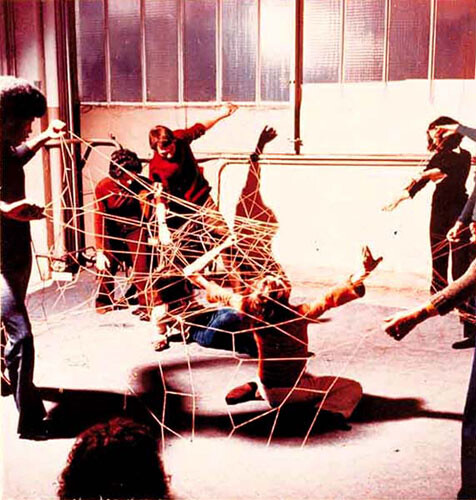

CF: I also feel this sense of urgency. Here, we know what happened: the KGB, the secret police in Hungary, they went to exhibitions, took photographs, and made reports. However, in Brazil and Argentina, people were killed or disappeared under military dictatorships. Institutions were not places to use; you had to go to a public space to be anonymous. The idea was not to be an artist but to have others with you. This idea of participation, which Hélio Oiticica was really into, meant that it was very important to not be an artist. The idea of an autonomous work of art really didn’t matter at all. We cannot directly compare Latin America to Europe and the US, but we can find zones of contact. Although in Brazil we had a right-wing military dictatorship, and here it was a communist dictatorship, you can see similar strategies of information circulation and how they created public space despite the political situation. So we need other criteria, not the ones we get from hegemonic history.
CH: There’s a really important text on provincial art by Luis Camnitzer from 1969. It’s about the problem of making art under the regime of modernism. He presents three alternatives: one, you can be a provincial modernist; two, you can try and be independent and produce a kind of folklorish art; or three, you can submit to literature and politics. In a way, he identifies with the third possibility. He says that radical practice must now be either purely documentary, or guerilla activity. Again, both of those involve anonymity, as you say.
CF: In fact, this guerrilla activity was part of Latin American artistic theory. We have a theory of guerrilla art from 1966 onward, I think. Nineteen sixty-eight is an important year too—in Brazil the dictatorship worsened from 1968 until 1983. That’s the general context. As art institutions in the East and the West wrote the hegemonic history and actively proliferated it, all the museums of modern art in Brazil and Argentina, which were created during the Cold War, adopted this offical history. Consequently, we know much more about Sol LeWitt than we do about Latin American artists who were making art at the time but have no publications, no catalogues, nothing written about them. When Latin American artists from this period are discussed in the West, they are assimilated into Western art history. To give you a small example: they have now renovated the Museum of Modern Art, where official narrative comes from. They have put up some works by Lygia Clark and Oiticica, the best-known Brazilian artists in the West. Not coincidentally, they are both dead. In my view, placing them in this gallery together with Eva Hesse and Robert Smithson assimilates these Brazilian artists into what was going on at that time in the West. There’s no way out of this: the history is spoken and written in English. If we’re talking about modernism of the 1920s and 1930s, the priority of Brazilian modern artists was to promote the identity of their country. They represented its exoticism, how it was mixed-race—the stereotypes of what it means to be Brazilian. When this changed, it wasn’t followed by the idea of representation. We lack representations of what exactly happened during the military dictatorship. It’s not by chance that we don’t have archives of visual art from this period. Many artists from this period are poorly documented. Only now are we starting to revise our official memory, because twenty years or so are missing from the historical record.
PP: It is important to mention how the West, and particularly South America, was perceived in Eastern Europe. Eastern European artists did not understand the political tensions in the West, because these tensions were connected with the Left, and the Left was associated with the Communist regime. Their perception of the Western neo-avant-garde was a bit narrow, because they did not really buy their political attitudes against the capitalist world, and against the sometimes very bloody dictatorships in Latin America that were fighting communists. This was a paradox that Eastern European artists did not understand. The West worked as a mirror for the East, but it worked as a curved mirror. Eastern European artists wanted to reject political interpretation and attitudes against political institutions and people who were fighting with communism. This is very important and very painful: the lack of leftist critique of the so-called left governments—the communist governments—which were actually not leftist.
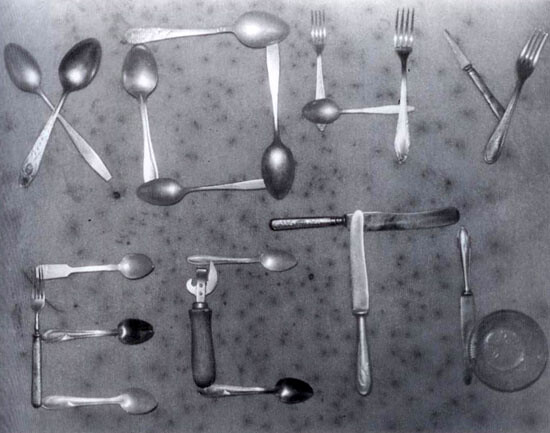

CH: In Europe, particularly in France, the intellectual ferment that led to May 1968 was part of a long process meant to de-Stalinize Marxism. The artistic Left in Europe was a sort of Trotskyite situationist Left, anti-Stalinist in a sense. I remember very clearly the defeat of the student movement in 1968. In England, the protest was identified particularly with the art schools, in opposition to a kind of authoritarian, provincial modernist schooling. There was a connection between the critique of modernist art education and a situationist political activity involving occupations. However, this very movement helped to produce the long right-wing reaction, particularly in England and America—that is to say, it really worried the authorities. They mistook these student protests for genuine proto-revolutionary action, and made sure they would never happen again. Educational reforms that are still underway, including in the institution where I work, are long-term parts of the process of de-radicalizing education. They’ve had very deep consequences. New forms of artistic radicalism are perhaps partly a reaction against them, although a rather impotent one. What we see from 1968 onward is increasingly a defeat of the Left and a surge of the Right. In that respect, 1968 is a crucial moment.
BG: Perhaps a remark to the relationship between the political and nonpolitical spheres. I remember the reaction to 1968–69 in the conceptual circle in Moscow, and our idea was that art is political, it’s a type of propaganda, and you can’t dissociate it from its ideological function. Komar & Melamid spoke of Pollock and Hitler as two kinds of decentered, ecstatic leaders; they spoke also about the proclamation of the independence of Greenwich Village by Duchamp, which took place almost at the same time as October revolution. So the initial gesture of considering art as propaganda was absolutely central for our reflections.
Category
Continued in Conceptual Art and Eastern Europe, Part II

